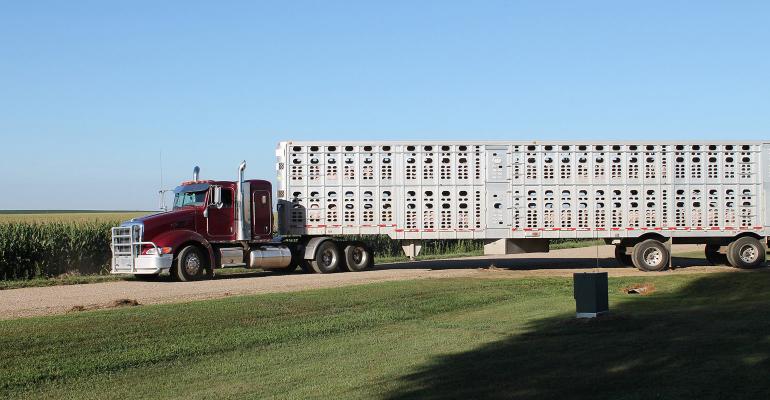Proper planning can keep pigs moving even if a foreign animal disease is detected.

Hog producers have long been hearing the mantra that it’s not a matter of if, but rather when the industry will have to cope with a foreign animal disease.
In the event that a FAD such as foot-and-mouth disease, classical swine fever or African swine fever invades the U.S. pork industry, all movement of live hogs would halt, as would U.S. meat export markets.
The United States has not had FMD since 1929, and classical swine fever was eradicated on U.S. soil in 1978, but the globe is littered with hot spots of these swine diseases. FMD is found in more than two-thirds of the world, though it is not found in North America or Central America. CSF is currently recognized in 35 other countries. ASF, which has been described as “CSF on steroids” is found in Eastern Europe, Russia and other former Soviet states, as well as South Africa and the Italian island of Sardinia.
In an attempt to maintain business-as-usual, a national Secure Pork Supply plan is being developed to provide a business plan to provide a workable continuity that is acceptable to state and federal animal health officials while providing a safe supply of pork for consumers.
The world has become increasingly smaller with the number of people traveling internationally on a daily basis, and each trip provides a potential conduit for these bad pathogens to get a first-class ticket back to our soil and our swine herd. Just as people have become accustomed to traveling, the U.S. hog population does not stay in one place, with an estimated 1 million pigs on the road daily. As you can see should a FAD hit our shores and find a weakness in the swine herd’s armor, it could spread very quickly.
Dave Wright, a veterinarian and Minnesota’s SPS coordinator, presented an update on the plan during the recent Minnesota Pork Congress. Though the SPS is voluntary, there is no reason that a producer should not be a willing participant.
Quick action is required should a FAD be detected in a swine herd. If FMD is detected, all exports of cattle, swine, sheep, goats and their uncooked products will be stopped. If CSF or ASF are found, all exports of swine and their uncooked products will be stopped.
Not meaning to play “Chicken Little,” but the seriousness of this issue cannot be ignored. As stated at the opening, it’s not a matter of if, but it’s a matter of when the U.S. swine herd is struck with a FAD. So, let’s get planning.
The Secure Pork Supply Plain is intended to aid those herds which are affected by the outbreak but not infected by the disease.
Wright outlines three modules to the SPS plan.
1. Traceability and movement management
“First and foremost get a premises ID number,” Wright says, and the U.S. swine industry has come through fairly strong here as he says something like 95% of pork producers already have PINs. That’s great, but what about the other 5%? Quick action requires knowing where to go if a problem arises, and farm identification aids animal health officials greatly. But what if an outbreak starts at a farm in the missing 5%?
Details and sample forms for obtaining a PIN can be found at SecurePork.org.
2. Enhanced biosecurity
Four main concepts producers should adhere to for enhancing their biosecurity measures include designating a biosecurity manager for your farm or site, as well as having a written site-specific biosecurity plan with documented training. Two final pieces to that are to have a defined perimeter buffer area and a defined line of separation.
Again, SecurePork.org has a plethora of materials to help producers get their operation up to speed, including a Biosecurity Checklist.
3. FAD training and response
Take the time now to prepare for an FAD by full participation in the Secure Pork Supply Plan by getting your operation up-to-speed, by familiarizing yourself with what to look for in your swine herd so that if there are abnormalities in your animals you are ready to act, rather than having to react.
Don’t play an ostrich, thinking the SPS requires too much planning, recordkeeping and documentation on behalf of your team. A little headache today can prevent a large headache and lots of heartache down the road. And please, do not think that your hog operation is an island, and that “it will never happen to me,” because more is at stake here than the health of your individual swine herd. An outbreak of foot-and-mouth could spell disaster for the entire U.S. swine herd, as well the U.S. agriculture economy.
As Wright says, the Secure Pork Supply Plan is currently important, not urgent, but it can become urgent overnight.
About the Author(s)
You May Also Like



